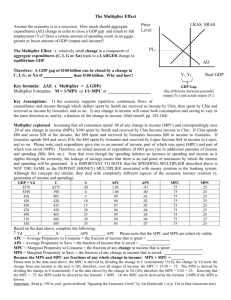

In shifting the$\ AD_1 \rightarrow AD$ curves to achieve long run equilibrium, Real GDP will have to increase by 200 billion.So then, how are my answers wrong according to the program? 6, so the multiplier is 1/.4 = 2.5, 100/2.5 = 40 billion in government purchases to restore long-run equilibrium. Marginal propensity to save can also refer to the whole economy. For an individual, the marginal propensity to save will reflect how much they want to put extra income into different forms of saving. To restore the economy to its long-run equilibrium, aggregate demand must be increased by i) _ and government purchases must be increased by ii) _ĭelta Y is the same as 1), so it's 100 billion for i) Marginal propensity to save (MPS) refers to the proportion of any extra income that is saved by consumers. Therefore, 4X= 100 (x = government purchases) leading to x = 25 The expenditure multiplier = 1/MPS = 1/(.25) =4 How much do government purchases need to increase to shift aggregate demand by the amount you found in part 1)? How much does aggregate demand need to increase to reach long-run equilibrium?īecause that's the AD1-AS equilibrium to AD1-LRAS line Department of Economics University of Maryland 3114 Tydings Hall, 7343 Preinkert Dr., College Park, MD 20742 Main Office: 301-405-ECON (3266) Fax: 30 Contact Us Undergraduate Advising: 30 Graduate Studies 30. Assume the government decides to increase government purchases as fiscal policy to reduce the burden of this recession. Fill in with MPS in Applied Economics Students information.

Note about the curves: The graph below depicts an economy where a decline in aggregate demand has caused a recession. I am having a hard time with the following economic questions (See attached).


 0 kommentar(er)
0 kommentar(er)
